I’m not one to make snap decisions about home upgrades, but when it came to replacing my old, drafty windows, SoftLite windows caught my eye. After months of research, I can confidently say they’re a fantastic choice for anyone looking to boost their home’s comfort, style, and energy efficiency.
These vinyl windows aren’t just durable—they’re packed with features that make them a standout. From their sleek designs to their energy-saving perks, SoftLite delivers. Trust me, you’ll want to consider these for your next home project.
Let’s walk through my experience and why I’m sold.
My Journey With SoftLite Windows
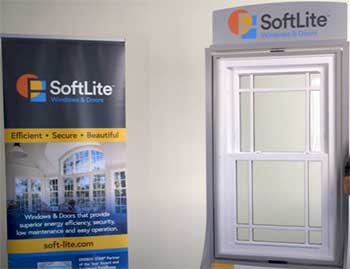
Picture this: my old windows were a nightmare.
They rattled in the wind, let in drafts that made my living room feel like an icebox, and looked like they belonged in a haunted house.
I knew it was time for a change, so I started hunting for replacement windows.
That’s when I stumbled across SoftLite. I’ll be honest—I wasn’t sold at first.
There are so many brands out there, and I didn’t want to get stuck with something that looked great on paper but didn’t deliver.
But after reading reviews, talking to contractors, and checking out SoftLite’s lineup, I took the plunge.
I went with the SoftLite Elements series for my 1960s ranch-style home in Ohio. The installation process wasn’t something I handled myself—SoftLite doesn’t do installations, so I worked with a local dealer who was a pro.
The crew showed up on time, measured everything twice (which I appreciated), and got to work. Watching those old windows come out and the new ones go in was oddly satisfying. The Elements windows, with their triple-pane glass and sleek vinyl frames, transformed my home’s look instantly.
My living room went from dated to modern, and the natural light pouring in was a game-changer.
What struck me most was how quiet my house became. I live near a busy street, and the noise used to drive me up the wall. With SoftLite’s soundproofing features, it’s like someone turned down the volume on the outside world.
My energy bills?
Noticeably lower. Last winter, I didn’t have to crank the heat to stay warm, and this summer, my AC didn’t work overtime. The windows fit perfectly, and the operation is smooth—none of that sticky, hard-to-open nonsense I dealt with before.
My only hiccup was coordinating with the dealer for cleanup, but that’s more on them than SoftLite. Overall, I’m thrilled with my choice, and I want you to know why these windows are worth considering.
Pros of SoftLite Windows
- Energy Efficiency That Saves You Money
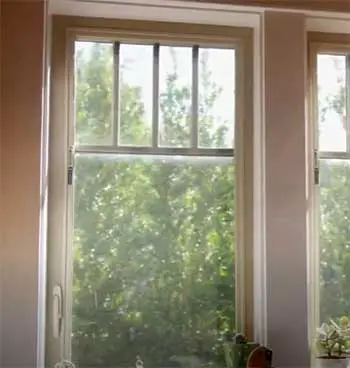
Let’s talk about something we all care about: saving cash.
SoftLite windows, especially their Elements and Imperial LS series, are built with energy efficiency in mind.
The triple-pane glass and low-E coatings keep heat in during winter and out during summer.
My energy bills dropped by about 15% after installation, which adds up fast.
Plus, many of their models are ENERGY STAR certified, so you know you’re getting top-tier performance.
If you’re tired of watching your money fly out the window (pun intended), SoftLite’s insulation and argon-filled panes are a serious win.
- Customization Options Galore
You’re not stuck with cookie-cutter windows here. SoftLite offers a ton of styles—casement, double-hung, bay, bow, you name it. Want a specific color to match your home’s vibe? They’ve got you covered with options like white, beige, or even wood-grain laminates.
I went with a crisp white finish to brighten my exterior, and I added custom grilles for a touch of charm. You can tweak the size, shape, and hardware to fit your vision. It’s like designing your dream windows without the headache of starting from scratch.
- Durability That Lasts
Vinyl windows sometimes get a bad rap for being flimsy, but SoftLite’s are built like tanks. The fusion-welded frames and metal-reinforced meeting rails make them sturdy enough to handle whatever Mother Nature throws your way.
I’ve had mine for a couple of years now, and they still look brand new—no warping, fading, or cracking. SoftLite’s been in the game since 1934, so they know how to make windows that stand the test of time. If you’re looking for something low-maintenance that won’t quit on you, these are a solid bet.
- Noise Reduction for Peace and Quiet
If you live near a busy road or have noisy neighbors, you’ll love this. SoftLite’s windows, especially the triple-pane models, are fantastic at blocking sound. I used to hear every car horn and dog bark, but now my home feels like a sanctuary.
The difference is night and day. Whether you’re trying to sleep, work, or just enjoy some peace, these windows help keep the outside noise where it belongs—outside.
- Lifetime Warranty with Real Value
SoftLite’s lifetime warranty is a big selling point. It covers the windows for as long as you own your home, and it’s transferable if you sell. I had a minor issue with a window lock, and their customer service sent a replacement part in days—no hassle.
Now, the warranty doesn’t cover labor or shipping, but the fact that they stand behind their product for decades gave me confidence. You don’t have to worry about being left high and dry if something goes wrong.
Not-So-Good Parts of SoftLite Windows
- No Direct Installation Services

Here’s where things get a bit tricky.
SoftLite is a manufacturer, not an installer, so you’ll need to find a local dealer or contractor to handle the installation.
This can be a mixed bag. My dealer was great, but I’ve heard stories of others who weren’t as reliable.
You’re at the mercy of whoever you hire for things like consultations, cleanup, or disposal of old windows.
If you’re looking for a one-stop shop, SoftLite might not be your first choice. Do your homework and pick a reputable contractor to avoid headaches.
- Limited Material Options
SoftLite specializes in vinyl windows, which is great if that’s what you want. But if you’re dreaming of classic wooden windows or something more high-end like fiberglass, you’re out of luck.
I didn’t mind because vinyl suited my budget and needs, but if you’re set on a traditional look or a different material, you might need to shop elsewhere. It’s a small downside, but it’s worth noting if you’re still exploring your options.
- Warranty Fine Print
While the lifetime warranty is a pro, there’s a catch. It covers the window components, but not the labor or shipping for replacements. When I needed that lock fixed, I was glad it was a simple DIY job because hiring someone would’ve cost extra.
For bigger issues, like a failed seal, you might need to buy a new sash and pay for installation. It’s not a dealbreaker, but it’s something to keep in mind if you’re expecting full coverage.
- Pricing Can Vary Widely
SoftLite’s pricing depends on the series and your dealer, which can make budgeting tricky. I paid around $680 per window for my Elements series, but quotes can range from $400 to $800 or more, depending on the model and installation.
If you’re on a tight budget, the higher-end series like Elements might feel steep compared to budget brands. Get multiple quotes to make sure you’re not overpaying, and don’t fall for high-pressure sales tactics.
Maintenance Tips For SoftLite Windows
- Cleaning the Glass for a Crystal-Clear View
Keeping your SoftLite windows sparkling is easier than you might think. I use a simple mix of warm water and a few drops of dish soap to clean the glass. Grab a soft cloth or sponge, dip it in the solution, and wipe in circular motions to avoid streaks.
For stubborn spots, a 50/50 mix of water and white vinegar works wonders. Avoid abrasive cleaners or scrubbers—they can scratch the low-E coating. I clean mine every couple of months, and they look as good as the day they were installed.
- Maintaining the Vinyl Frames
Vinyl is low-maintenance, but it still needs a little love. I wipe down the frames with a damp cloth and mild soap to remove dirt or pollen buildup. For tougher stains, a soft brush does the trick. Never use harsh chemicals like bleach or ammonia—they can damage the finish.
I also check the frames for any caulk cracks around the edges, especially after heavy storms. A quick touch-up with silicone caulk keeps everything sealed tight. It takes me about 20 minutes to clean all my frames, and it keeps them looking sharp.
- Lubricating Moving Parts
To keep your windows opening and closing smoothly, lubricate the tracks and hinges every six months. I use a silicone-based lubricant (avoid WD-40—it attracts dust) and apply a thin layer to the tracks of my sliding windows and the hinges of my casements.
Wipe off any excess to prevent buildup. This simple step makes a huge difference in how effortlessly the windows operate. I learned this the hard way when one of my sliders started sticking, but a quick lube fixed it right up.
- Checking Seals and Weatherstripping
SoftLite’s seals are top-notch, but they’re not invincible. Every year, I inspect the weatherstripping around the windows for wear or tears. If you notice drafts or see damaged seals, contact your dealer or SoftLite for replacements.
Keeping the seals in good shape ensures your windows stay energy-efficient and weatherproof. I also check the caulking around the exterior frames annually, especially after harsh winters. A little maintenance here goes a long way in preventing leaks or energy loss.
- Handling Warranty Claims
If something goes wrong, don’t panic. SoftLite’s warranty process is straightforward, but you’ll need to act fast. I had to file a claim for that faulty lock, and all it took was a quick call to their customer service team with my window’s serial number.
Take photos of any issues and keep your purchase records handy. They’ll guide you through the process, but remember that you might need to cover labor or shipping costs. Staying proactive with maintenance can help you avoid bigger issues down the road.
Comparing SoftLite To Other Window Brands
I put SoftLite’s Elements series up against Mathews Brothers Sanford series, Pella Impervia, and Universal Windows Direct’s UniShield line to see how they stack up. Let’s break it down by comparing each brand head-to-head across key factors.
- SoftLite Vs. Mathews Brothers
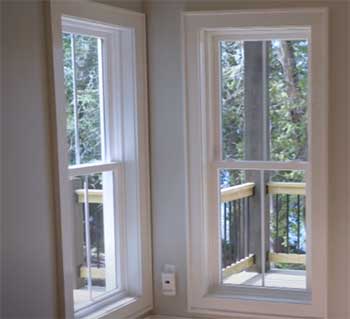
Energy efficiency is where SoftLite shines.
The Elements series boasts a U-factor of .19 with triple-pane glass, keeping my home cozy and cutting my energy bills by about 15%.
Mathews Brothers’ Sanford series, with a U-factor of .22, is solid but doesn’t insulate quite as well.
SoftLite’s vinyl frames are fusion-welded and reinforced, feeling sturdier than Mathews’ slightly thinner frames.
Customization is a tie—both offer styles like double-hung and casement, but SoftLite’s color options, like wood-grain laminates, give it a slight edge.
Price-wise, Mathews is cheaper, starting at $350-$500 installed, compared to SoftLite’s $400-$800. However, SoftLite’s lifetime warranty feels more reliable, as Mathews’ dealer-dependent support can be inconsistent.
- SoftLite Vs. Pella Impervia
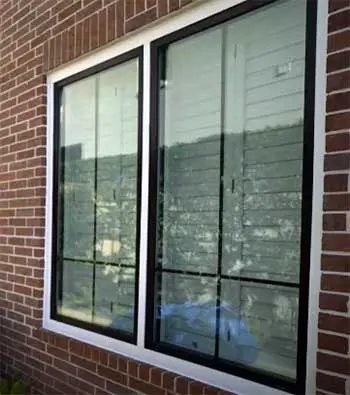
Pella Impervia’s fiberglass frames are a different beast compared to SoftLite’s vinyl.
Impervia’s U-factor of .25 is decent but trails SoftLite’s .19, meaning my energy savings were more noticeable with SoftLite.
Pella’s fiberglass is tougher in extreme heat, which could matter in warmer climates, but SoftLite’s durability holds up fine in Ohio’s winters.
Customization leans toward SoftLite—its range of styles and finishes, like my custom grilles, felt more flexible than Pella’s more rigid options.
Pella’s pricing ($500-$900) can exceed SoftLite’s, especially for larger windows. Both warranties are strong, but SoftLite’s lifetime coverage is transferable, giving it a slight edge for resale value.
- SoftLite Vs. Universal Windows Direct
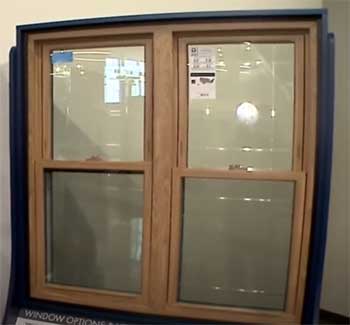
Universal Windows Direct’s UniShield line is budget-friendly, with prices as low as $300-$450 installed, compared to SoftLite’s $400-$800.
But there’s a trade-off.
UniShield’s double-pane models, with a U-factor around .30, can’t match SoftLite’s triple-pane efficiency (.19), so my energy bills stayed lower with SoftLite.
Both use vinyl, but SoftLite’s reinforced frames feel more robust than UniShield’s base models, which some users say fade over time. Customization is comparable, though SoftLite offers more high-end finishes.
Universal’s lifetime warranty sounds good, but claims can be trickier than SoftLite’s straightforward process. If you’re on a tight budget, Universal’s tempting, but SoftLite’s performance wins out.
Frequently Asked Questions (FAQ)
SoftLite Windows & Doors, based in Streetsboro, Ohio, manufactures all their windows and doors. They’ve been in the business since 1934, focusing on high-quality vinyl products built to last.
SoftLite offers a lifetime warranty on their vinyl windows and doors, covering components for as long as you own your home. It’s transferable if you sell, but labor and shipping costs for replacements aren’t included.
A mix of warm water and mild dish soap works best for cleaning SoftLite windows. For stubborn stains, try a 50/50 water and white vinegar solution. Avoid abrasive cleaners to protect the glass and frames.
The Elements series is manufactured by SoftLite Windows & Doors. It’s their top-tier vinyl window line, known for triple-pane glass, excellent energy efficiency, and customizable designs.
Why SoftLite Windows Are Worth Your Investment?
After living with SoftLite windows, I can’t imagine going back. They’ve made my home quieter, more comfortable, and easier on my wallet.
The customization, durability, and energy savings make them a no-brainer for anyone upgrading their windows. Sure, you’ll need to navigate the installation process, but the payoff is worth it.
If you’re ready to transform your home with windows that look great and perform even better, SoftLite’s the way to go. Trust me—you’ll love the difference they make.
